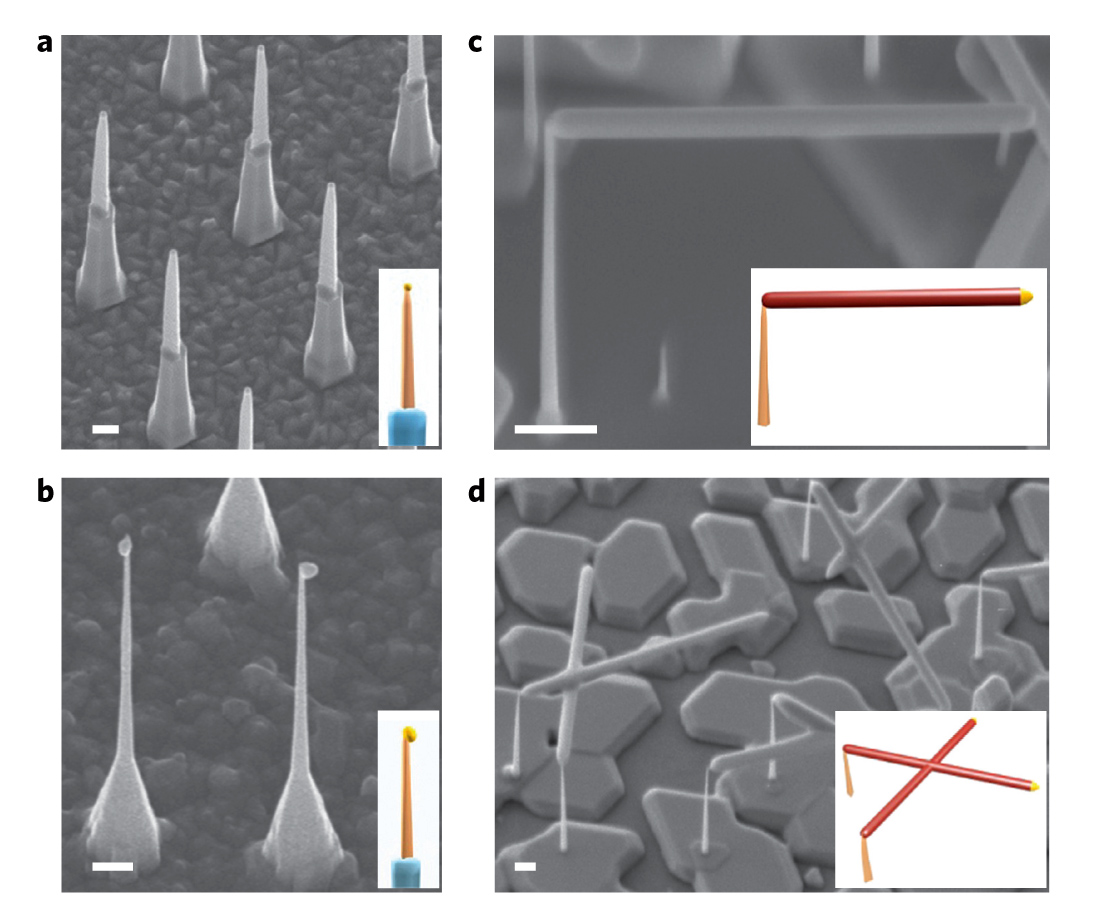Prof. Kouwenhoven’s team and TU/e researchers have developed a way to make nanocrosses. They need these indiumantimonide nanodevices to use Majorana’s as quantumbits.
Last year Kouwenhoven and colleagues made headlines with their discovery of Majorana quasi particles which emerged at the ends of a semiconductor nanowire in contact with a superconductor.
One of the reasons behind the huge interest in the discovery was the anticipated use of Majorana fermions as stable quantumbits, whereas other devices with a qubit potential maintain coherence over milliseconds or less.
The next thing on Kouwenhoven’s agenda was to prove that the quasi-particles they had found really would perform as Majorana’s, including the predicted particular behaviour at being moved around.
According to quantum mechanics, when two quasiparticles in a two-dimensional system are interchanged, their new state may be the same as before (as in the case of bosons), the inverse (like fermions) or anything in between. Such non-commutative behaviour (called ‘non-abelian’ statistics) is very sought-after since Prof. Alexei Kitaev (University of California) had shown in 1997 that particles with such behaviour may be used as bits in a quantum computer.
There was however a major problem with moving the Majorana’s along the semiconducting nanowire in order to exchange them. They would annihilate at the encounter. It is thus that the idea of a nanocross popped up. This would allow storing temporarily one Majorana fermion in an auxiliary leg of the junction while moving the other particle across.
That may sound plausible, but making such a structure is no easy feat. Dr. Erik Bakkers (TU/e and TU Delft) and his team managed to grow hooked nanowires and then merged a number of these into nanocrosses.
They started parallel growth by heating the chip on which nanowires were being grown. As a consequence of the elevated temperature, a tiny gold droplet that catalyzes nanowire growth moved to the size of the nanowire stem. When vapour deposition was resumed, the indium-antimonide (InSb) nanowire grew further from the new position of the gold droplet, leading to growth at a near perpendicular angle to the stem.
The group attached a semiconductor cross to superconducting leads (as it is at these boundaries that Majorana’s emerge) and to check the devices electrical and magnetic behaviour, which proved to be satisfactory.
The authors are now hopeful that such nanocrosses will indeed allow the critical manipulation of Majorana’s. These tests should make clear whether or not Majorana’s (and the nanowires that house them) are a suitable base for the so-called topological quantum computer.
–> Sébastien R. Plissard, Ilse van Weperen et. al. Leo P. Kouwenhoven and Erik P.A.M. Bakkers, Formation and electronic properties of InSb nanocrosses, Nature Nanotechnology, 13 October 2013. DOI: 10.1038/nnano.2013.198



Comments are closed.